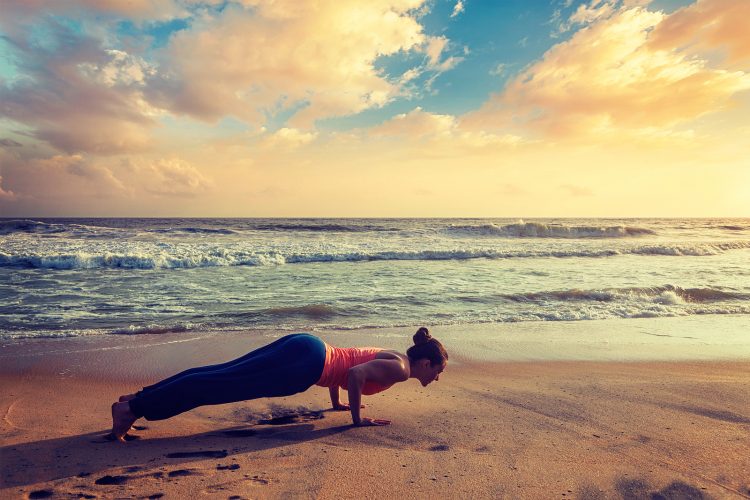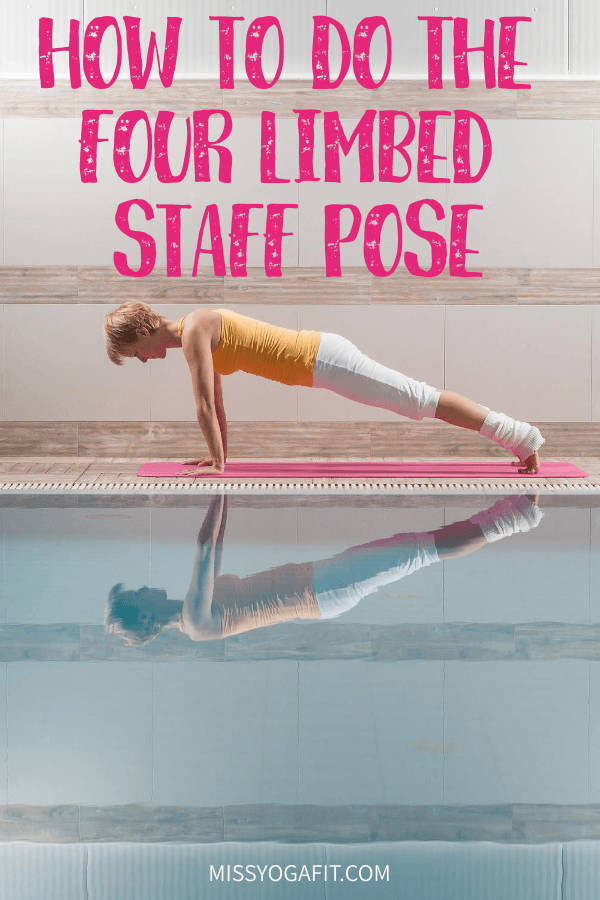
The four limbed staff pose is one of the most used yoga pose in the traditional sun salutation workout sequence.
POSE INFORMATION
GENERAL INFO
Name in Sanskrit: Chaturanga Dandasana
Difficulty: Easy
POSE BENEFITS
- This pose makes the arms and wrists stronger.
- It also tones the abdominal muscles.
POSE CAUTIONS
Students who have the following condition should avoid the exercise:
- People with Median nerve compression in which the individual’s hand and arm feels are numb.
- Pregnant women.

HOW TO PRACTICE THIS ASANA
ONE
Start with the Adho Mukha Svanasana and then perform the plank pose. Make your scapulars firm over your back ribs. Push your tailbone to your pubis.
TWO
Breathe out and bring your body and legs gradually to some distance away from the floor. (They should be parallel to the floor.) Don’t fret if your lower back move like it’s on a swing towards the floor. It’s normal for it to sway and for the tailbone to point towards the ceiling.
You must ensure the tailbone is in its position. And turn your active legs inwards. Bring the pubis near to the navel.
THREE
Make the space between the shoulder blades wide. Keep the elbows to your side so they don’t extend too far from your body.
Press them towards the heel. Steady yourself on he floor with your index fingers, hold the base of these fingers strongly on the floor. Push the sternum and your head to face front.
FOUR
Four-Limbed Leg Lift is among the most frequently practiced pose and you can do the pose individually. This should be between 10 – 30 seconds.
Relax by breathing out then on the floor slowly. Or you can even return to the Adho Mukha Svanasana pose.
How to do the Four Limbed Staff Pose (Chaturanga Dandasana)
BEGINNER TIPS
Beginners will have to build strength (across the arms, back and legs) gradually to perform the other form of Chaturanga Dandasana.
Start with plank pose; bring your knees slowly to the floor and your sternum slowly to an inch from the floor.
MODIFICATIONS & PROPS
Try to stand straight while in this position. Stay close to wall as close as few inches.
Push your hands on the wall in a way that he hands are below your shoulders. Now try o push your body against the wall, but notice how your shoulder blades are firm and reluctant to move.
Extend your tailbone the floor and your sternum to the ceiling.
MODIFICATIONS & PROPS
This pose is quite difficult for beginners and experienced students alike. To ease things, place a blanket under your spine when you are doing the Plank Pose.
Minimize the times or period you will use this. The purpose is to give you a little support.
PARTNERING
With the help of a partner, it will be easier to hang the pelvis during the pose and extend the spine. Start with or without a blanket. Allow your friend stand astride you. They will turn his or her toe inward around your waist, flex with the area around your pelvis.
You can also move your sternum to a side while your friend pulls your pelvis slightly in an opposite direction towards your feet.
VARIATION
Try to turn the balls of your feet over the top of your feet and push your torso to the front.
Your aim is to make pose a little more challenging. After this step, your hands should now be by your sides and your aim is achieved.
Joanne Lipston is a certified Yin Yoga teacher in United States, passionate about the transformative power of this practice. With a dedication to promoting strength, flexibility, and mindfulness, Joanne creates an energetic and supportive environment in her classes.

